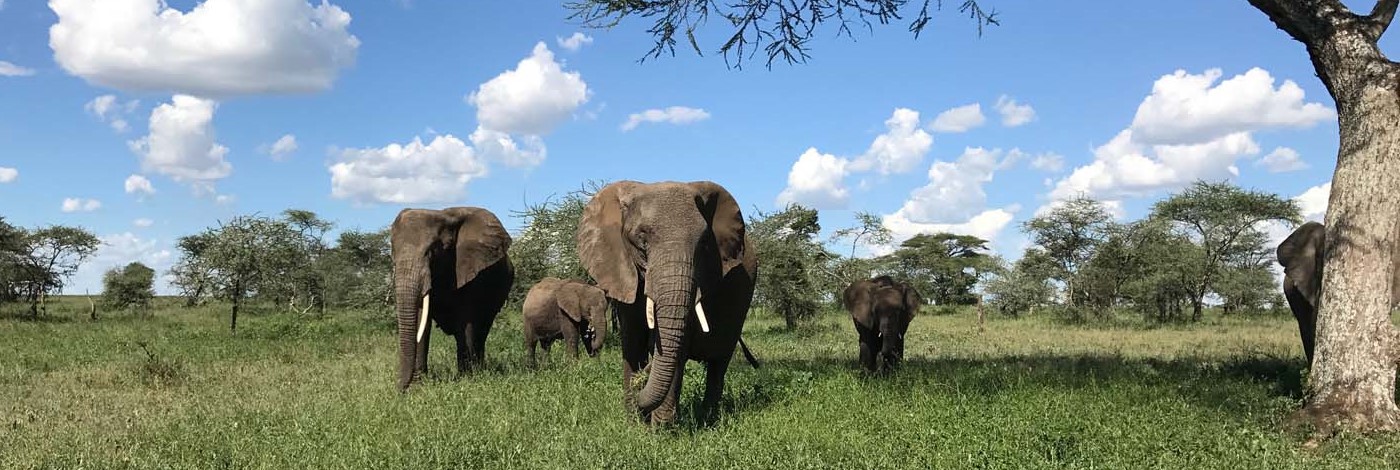- Southern Circuit
Ruaha
National Park is vast, and was upgraded to a National Park in 1964 and was
further enlarged in 2008 to its current size of 20,226 sq. km making it
Tanzania’s second largest National Park. This makes it about the size of New
Jersey in the United States, or of the whole country of Wales in the UK! In
fact Ruaha is part of a much larger ecosystem of about 45,000 sq. km. Nature
reigns supreme across this enormous area.
And
what an area! Rivers, mountains, plains, rock kopjes, swamps, dense woodlands,
open savannas spread out across an immense landscape that has barely been
touched by man. Wooded hillsides, many with rounded granite outcrops and
scatterings of huge baobabs, are dissected by sandy, rock strewn seasonal
rivers and streams running down to meet flood plains and seasonal swamps, many
of which end up in the Great Ruaha River.
Seasonal
rivers are lined by scattered groves of palms, thorn trees, fig trees and
sausage trees providing mid-day shade for all sorts of wild animals. They are
key features to enjoy during game drives, especially during the dry season when
only pools remain or the elephants have to dig in the sand for water. This is
Africa of a bygone era – the world as it was before modern man.
The
only perennial river is the Great Ruaha River, which flows along the southeast
boundary, but even this becomes only a trickle in places at the end of the dry
season in October. Ruaha’s dry
season is between June and October and its wet season is November to May.
Temperatures range between 16 - 27 °C.
Wildlife
Wildlife
is especially varied because of the overlap of eastern and southern African
wildlife zones, so besides regular big game such as elephant, buffalo, and
plains animals, the more unusual species such as the antelopes sable, roan,
greater and lesser kudu are quite common. Cape hunting dog are also often encountered.
Ruaha is also a great place for the big cats lion, leopard and cheetah.
Birdlife
is also understandably rich. In fact outstandingly so with over 550 species
having been recorded, and an enormous variety of birds of prey.
Perhaps
the most abiding joy of Ruaha is the wild character of the land within which so
many animals roam. It is a land of starry nights, cool mornings and baking
mid-day heat. A land of monumental storms in the rainy season, and desiccating
winds in the dry. This is an Africa that sets it mark on you and from which it
is tough to turn away; and one that you never forget. This is why it is so
worth the long journey to get here, be it by road or air.
Activities
•
Game viewing by vehicle.
•
Walking safaris accompanied by an armed guide approved by the Park authorities
•
Night game driving in approved locations.
Accommodation
The
Park has public and special campsites for independent operators, as well as a
hostel, self-catering bandas, and cottages. There are numerous lodges and permanent
camps in the southern parts of the Park.
Getting there
Air.
There
are both scheduled and chartered flights into the park mainly from Arusha,
Dodoma, Kigoma and Dar-es-salaam. Park’s airstrips are located at Msembe and
Jongomero.
Road.
Driving
to Ruaha is about 130km from Iringa town and 625 km from Dar-es-salaam city.
The road into the park is passable throughout the year.
Safari ideas
Ruaha
lies almost directly on a route between Nyerere National Park and Katavi and
Mahale Mountains National Parks. The end point would be Dar es Salaam. This
safari would combine the chimps of Lake Tanganyika, the vast flood plains of
Katavi, the big game wonders of Ruaha, ending with the lakes and rivers of
Nyerere National Park.
A
longer safari would start in Dar es Salaam and proceed via Julius Nyerere,
Ruaha, Katavi and Mahale to Burigi Chato and then via boat to Rubondo Island in
Lake Victoria and on east to the Serengeti National Park, ending in Arusha.
What an odyssey!
While
visiting Ruaha National Park you may pass through the Isimila Stone Age and
Mtwa Mkwawa Museum. The Isimila Stone Age lies about 20 km to the southwest,
contains archeological artifacts, particularly stone tools, from human
habitation about 70,000 years ago. Mtwa Mkwawa Museum located at Kalenga ward
was established i n 1954 after returned of Mkwawa skull belonged to Hehe
ethnics group from Germany after restored for 56 years.
